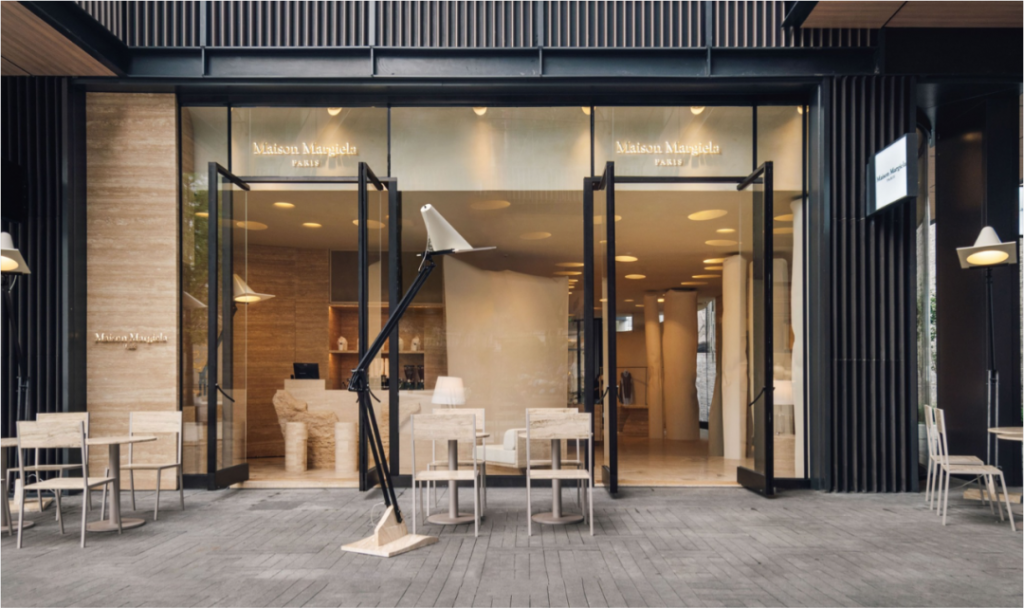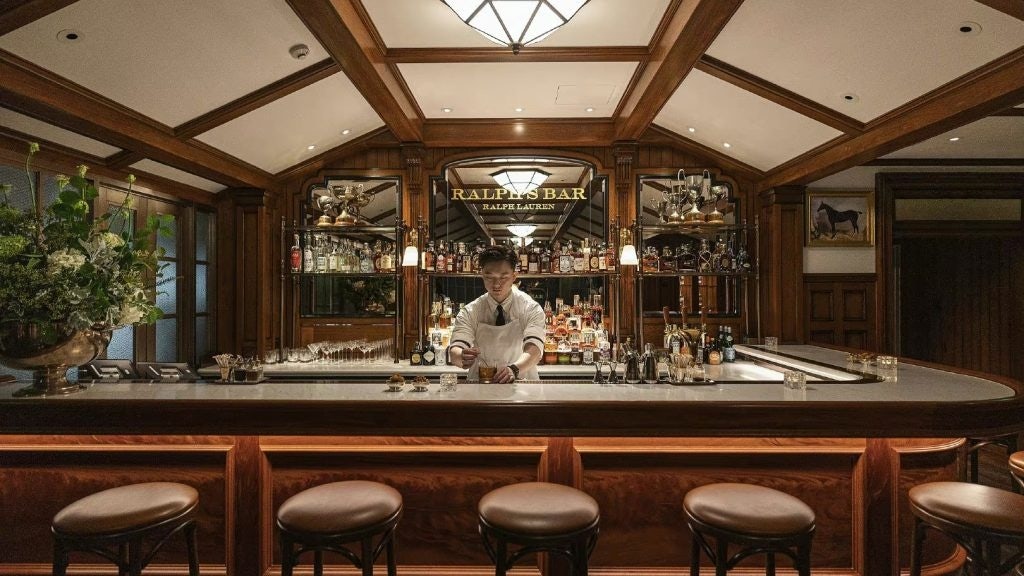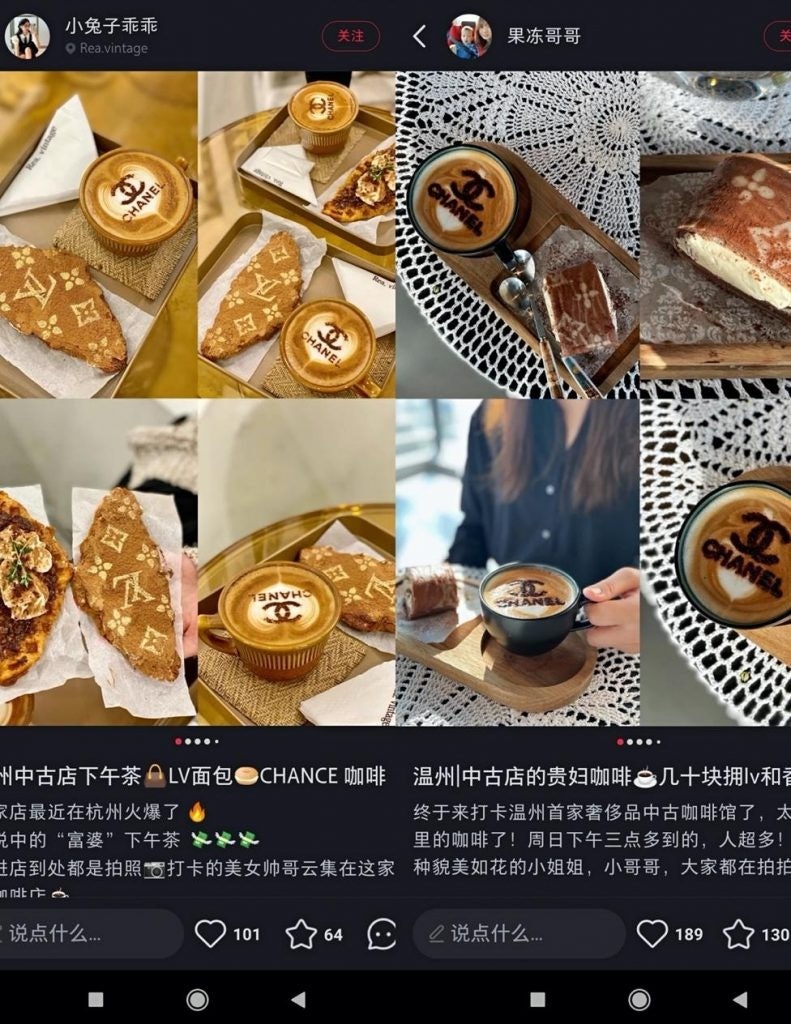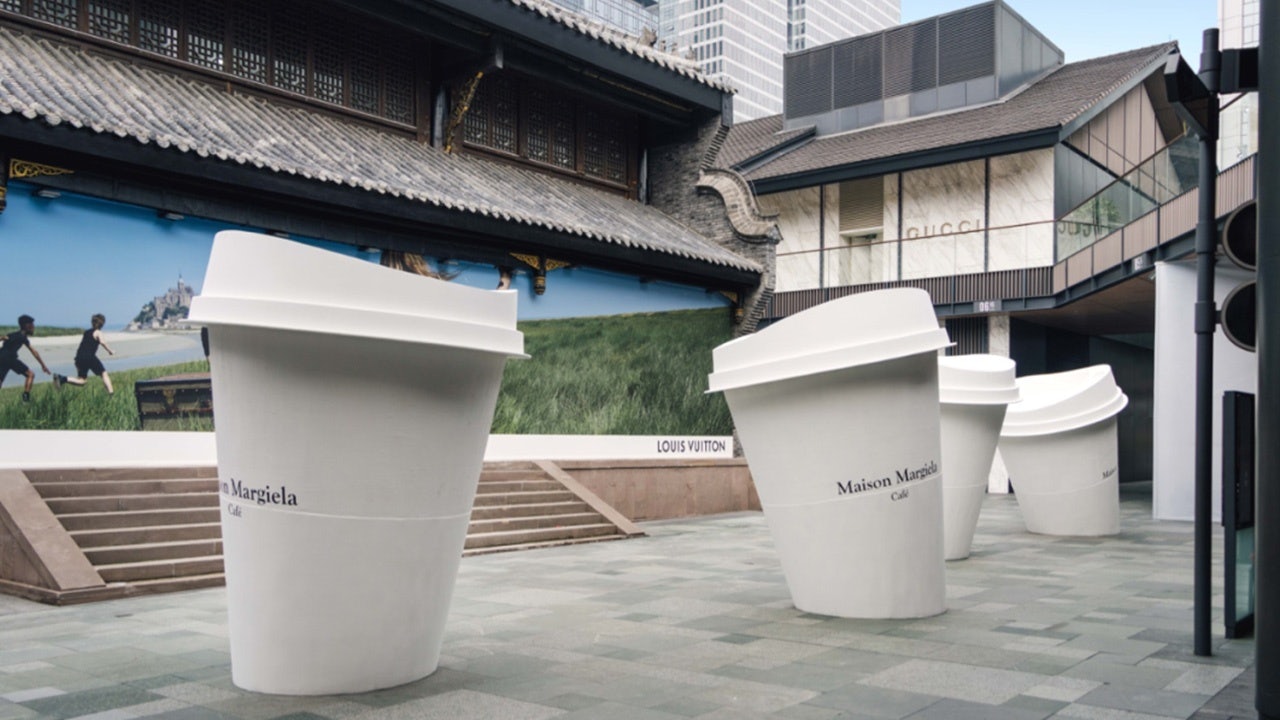Ask any fashionista in China about the latest buzz on the ground, and chances are they will give the same response: the Maison Margiela café, which unveiled its first global branch in Chengdu in June before expanding a pop-up presence to Shanghai and Shenzhen.
Located in Chengdu's luxury shopping landmark Taikoo Li, the café is part of Maison Margiela's new flagship building that divides into a store, a lifestyle showroom, and an exhibition space. Visitors will find every photo-worthy detail they need to make the perfect social media post: big, branded coffee cup installations, a sleek interior décor that mirrors the label’s minimalist aesthetic, and cakes in the shape of its iconic Tabi boot and four-corner logo stitching. Since its June opening, the café has amassed over 7,000 posts on Xiaohongshu and long waiting lines that have often exhausted the shop's receipt printing papers, as employees told the local newspaper The Bund.

"Maison Margiela really took the branded experience to a new level," says Qirui Chen, a Chengdu-based freelance fashion reporter. "The coffee cup installations set against Chengdu's traditional architecture are instant social media hits. But besides that, they have curated every detail in the café to be Margiela-esque. It has become the hottest hub for local creatives and fashionistas now." Before this café venture, the group had collaborated with the hip homegrown coffee chain Seesaw in 2020 on a pop-up to promote its perfume "Coffee Break."
Margiela's café venture might not be groundbreakingly new in the luxury and fashion business playbook — but its wide popularity in China today has pointed to a new direction where the industry can engage with the country's recession-weary consumers.
Other luxury lines have accelerated their opening of branded cafés across China's most aspirational shopping districts this year. In April, Cartier brought its first teahouse to its newly renovated Chengdu flagship, serving coffee, tea, and desserts to VIP clients from the area. In addition, Ralph Lauren opened the APAC region's first Ralph's Bar in Chengdu. And in October, Dior is set to launch two Dior cafés in Chengdu and Shanghai, according to local sources.

"With a slowing economy, and massive layoff from high-growth sectors flooding the news headlines today, many young professionals are shifting their consumption habits from luxury to food and drink. They are looking for small, concrete happiness," explains Chen.
The café + restaurant formula has been tried and tested in luxury's lifestyle extension models, yet what is new here is the role these cafés play in retailers' mainland strategies. According to Bain, houses should expect a reduced growth pace in 2022 due to weaker China spending under a persistent zero-COVID policy. Faced with dampened consumer confidence and softening demand, selling cappuccinos at $5 (35 RMB) and cakes at $10 (70 RMB) proves to be an effective way to draw foot traffic back into companies’ brick-and-mortar locations and engage with a broad range of brand devotees.
China's surging coffee market also provides the perfect opportunity for luxury makes to democratize brand codes into a premium yet still socially shareable experience. According to a report from local research firm Qianzhan, China's coffee consumption has grown at an average 15 percent rate in the past five years, higher than the global average growth of 2 percent. Average Chinese coffee consumption also increased from six cups per year in 2018 to over 10 cups in 2022. The younger urban generations no longer see coffee as the occasional treat it was a few years ago, but as a lifestyle staple to enjoy during a typical working day.
Domestic luxury resale stores were some of the first movers to spot this opportunity to tap the young consumer. Over the past year, some of China's most famous luxury resale names, including Rea Vintage in Hangzhou and Shenglan Vintage in Chongqing, started serving “luxury lady” latte art featuring big brand logos. After shopping, customers enjoyed an extra photo opportunity by ordering a latte painted with Chanel's Double C logo and an LV trunk cupcake.

On Xiaohongshu, over 14,000 posts under the hashtag "中古店咖啡” (vintage store's luxury coffee) detail the different logo coffee experiences from China’s luxury retailers, helping to reinforce coffee's association with aspirational lifestyles — establishing a café-centric social currency.
With China's stagnation and a global slowdown, the country's Gen Z consumers will increasingly demand entry-level branded experiences that provide storytelling and comfort. For maisons, this means they must go beyond product desirability to deliver newness and use hyperlocal touchpoints to meet consumers that still cannot go abroad due to the travel ban. With logo coffee and tea, a new wave of branded experiences is just warming up.
